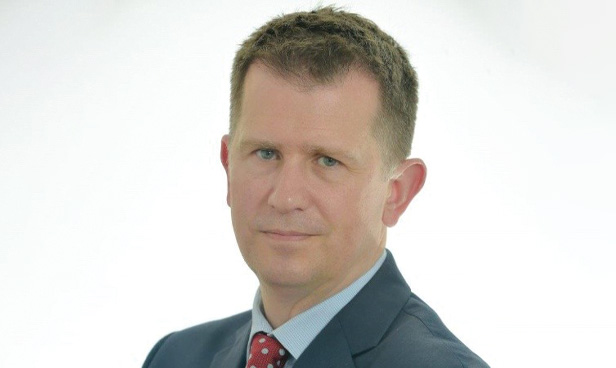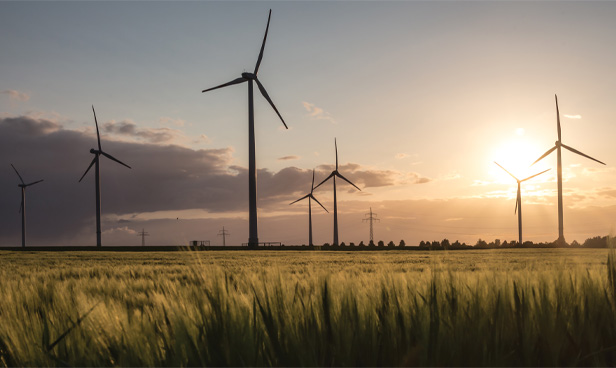
Confronting the increasing threat of cyberattacks against electricity infrastructure
21st April 2021
A vision for powering a sustainable future
29th April 2021Achieving our ambitious power sector renewables target

As Ireland transitions towards a zero-carbon future, Ireland’s policy makers and principal sectoral actors must ensure the decoupling of future economic growth and emissions growth. This challenge is accentuated by the expected need to deliver increased energy demand relative to today in order to drive future growth. Ireland’s energy demand has seen considerable increases since 2015, underpinned by buoyant economic activity and a growing population. While advancements in energy efficiency will continue to deliver benefits, the energy needed to support Ireland’s forecast future growth and economic activity is expected to increase from 170 TWh in 2020 to circa 205 TWh in 2050.
To meet our specific target of 70% renewable electricity by 2030 there are some significant obstacles:
- Total primary energy demand is forecast to increase over this time period driven significantly by data centre build out;
- As large portions of the heat and transport sectors are electrified, the portion of total energy met through electricity production will increase significantly meaning 70% of a much larger quantity;
- The vast quantity of assets to be deployed over a relatively short timeframe will require very active citizen and stakeholder engagement;
- Due to our island status it will not be possible to rely solely on interconnection to meet our power needs when traditional renewable production (wind or solar) is not available;
- Curtailment of renewable generation is already an issue and we have seen negative pricing in the day ahead markets recently. This will become more significant as we build out more renewables;
- Any solution must also address security of supply requirements in a cost effective manner.
Unlocking Ireland’s potential for offshore wind
The combination of Ireland’s island status and our abundant wind resources ensures that our future decarbonised energy system will be built on a base of offshore wind. While the pipeline of ‘Relevant Projects’ off the east coast partially addresses our near term targets, further steps are needed to allow for the additional 1.2GW to be identified and developed. Some of the main obstacles to progressing offshore wind development are the current absence of required policy and legislation, the inability of offshore wind projects to connect to the grid and challenging route to market. Recently, positive steps have been taken to progress the framework of policy, legislation and studies to support the national offshore ambition. However, as projects take approximately nine years from inception to operational status, the time frame for meeting 2030 targets gets tighter by the day. Looking further ahead to our ambition beyond 2030, deploying off Ireland’s west coast will be critical. The water depth in this area will require floating platforms. In addition to the floating offshore rigs, enhanced port infrastructure will be required. With projections of 30GW of floating offshore wind being developed off the west coast of Ireland, fundamental decisions need to be made regarding how best to utilise the excess electricity that will be produced during high wind periods.
Security, storage and flexibility: Supporting increased levels of renewable energy on the grid
Maintaining a balanced electricity system must be achieved while also addressing the wider societal need for decarbonised energy outside of the electricity sector. Key to both of these challenges is finding the right storage and flexibility solutions which complement our renewable assets.
The technologies are in existence and, over the last decade, we have seen them become commercially viable in the current energy market context. A good example of this is battery storage, where there is now a committed project pipeline of approximately 770 MW of battery storage. In addition, demand side storage and synchronous condensers are also coming into play.
However, longer duration and inter-seasonal storage will also be required as will solutions beyond biofuels to power energy demand that cannot be economically electrified such as HGV transport, energy intensive manufacturing processes and a portion of legacy housing stock heating. Creating green hydrogen with any excess electricity produced by our renewable generation is an obvious solution which could also be a carbon free replacement to traditional gas fired power production.
Energy policy which drives deployment of the required assets and supporting infrastructure is required. Energy market and regulatory solutions are needed to drive changes at the distributed and centralised level. These will include smart solutions (including demand side response from EVs, smart meters) and grid scale solutions (energy storage, flexible generation). The technologies that will support our 2030 and 2050 targets are known today. An integrated energy system model and ambitious policies and market structures are required now to drive attainment of our shared decarbonised energy vision.
Kim McClenaghan
Partner, Energy and Utilities Leader
PwC Ireland
T: + 353 86 339 0884
E: kim.a.mcclenaghan@pwc.com
John O’Connor
Energy Deals Lead and Director Corporate Finance
PwC Ireland
T: + 353 87 907 5727
E: john.x.oconnor@pwc.com
Rebecca Greene
Energy and Sustainability Tax Lead and Deals Tax Director
PwC Ireland
T: + 353 86 104 6502
E: rebecca.greene@pwc.com
